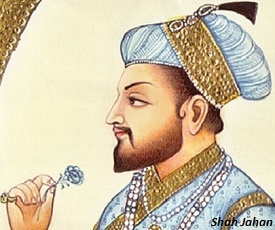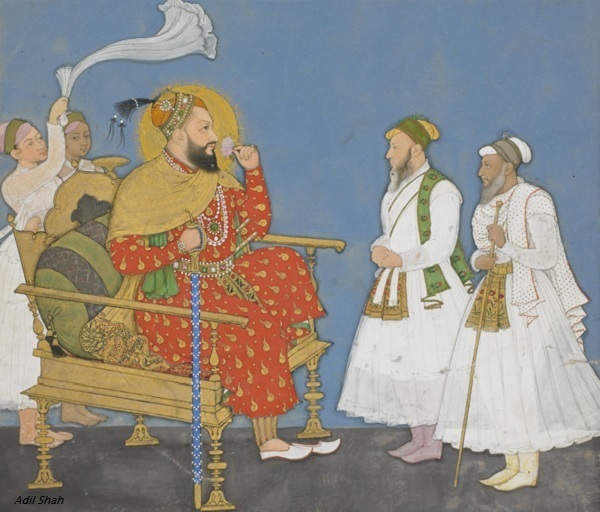
- Medieval Indian History - Home
- Kingdoms of North India
- The Rajputs
- The Invaders
- Delhi Sultanate
- The Khilji Sultans
- Tughlaq Sultans
- Lodi Sultans
- New Kingdoms
- Religion
- The Sikh Movement
- Babur’s Advent into India
- Major Battles
- Significance of Babur's Conquest
- Humayun’s Conquest
- Humayun’s Downfall
- Sur Empire
- Akbar the Great
- Early Phase of Akbar’s Reign
- Expansion of Mughal Empire
- Akbar’s Administrative System
- Akbar’s Organization of Government
- Akbar’s Relation with Neighbours
- Rebels during Mughal Empire
- Deccan & South India
- Conquest of South – I
- Conquest of South – II
- Deccan’s Cultural Contribution
- Political Development Mughals
- Nur Jahan
- Shah Jahan’s Rebel
- Mughals’ Foreign Policy
- Mansabdari System
- Social Life under the Mughals
- Nobles & Zamindars
- Trade & Commerce
- Mughals’ Cultural Developments
- Language, Literature & Music
- Religious Ideas & Beliefs
- Problems of Succession
- Aurangzeb’s Reign & Religious Policy
- North-East India
- Popular Revolts & Movements
- Rise of Maratha
- Administrative System of Shivaji
- Aurangzeb & Deccani States
- Reference and Disclaimer
Conquest of South II
Shah Jahan
Shah Jahan ascended the throne in 1627. At the same time, Ahmednagar lost badly and Bijapur and Golconda accepted the Mughal Suzerainty.

Shah Jahan came to a conclusion that there could be no peace for the Mughals in the Deccan as long as Ahmednagar continued as an independent state. This conclusion was a major departure from the policy, which had been followed by Akbar and Jahangir.
Shah Jahan was not much interested to extend Mughal territories in the Deccan beyond what was necessary. He, therefore, sent a message to Bijapur ruler and offered to cede to him roughly one-third of the Ahmednagar state.
The demand of one-third territory from Ahmednagar was a shrewd move on the part of Shah Jahan with the intent to isolate Ahmednagar diplomatically and militarily. Jahangir also offered services to the various Maratha sardars.
Adil Shah
Adil Shah also was anxious because of Malik Ambars humiliation and the annexation of Sholapur. He, therefore, accepted Shah Jahan's proposal, and deputed an army at the Nizam Shahi border to cooperate with the Mughals.

In 1629, Shah Jahan strategically deputed a large army against Ahmednagar; one group sent to operate in the Balaghat region (in the west), and the other in the Telangana region (in the east).
The Mughals, on their part, had refused to hand over to the Adil Shah the areas allotted to him under the agreement. As a result of this, Adil decided to help Nizam Shah who agreed to surrender Sholapur to him.
Adil Shah sent a large army under Randaula Khan (Bijapur General) and Murari Pandit for the surrender of Daulatabad and for provisioning its garrison.
Shahji Bhonsle also was joined in Bijapur's service to harass the Mughals and cut off their supplies. But the combined operations of the Bijapuri forces and Shahjis forces were failed.
In 1633, Mahabat Khan (Mughal general) was closely interested in Daulatabad, and forced the garrison to surrender.
After the defeat, Nizam Shah was sent to prison in Gwalior (Madhya Pradesh). This war marked as the end of the Nizam Shahi dynasty.
By following the path of Malik Ambar, Shahji nurtured a Nizam Shahi prince, and raised him up as ruler.
Adil Shah sent a force of seven to eight thousand horsemen to support Shahji, and encouraged many of the Nizam Shahi nobles to surrender their forts to Shahji.
Many scattered Nizam Shahi soldiers joined Shahji whose force swelled to 20,000 horse. With these, he harassed the Mughals and took control of large portions of the Ahmednagar state.
By understanding the critical situation, Shah Jahan deputed a large army to invade Bijapur. Further, the policy of carrot and stick and the advance of Shah Jahan to the Deccan changed the Bijapur politics.
-
The leaders of the anti-Mughal group including Murari Pandit were displaced and killed and a new agreement was made with Shah Jahan. According to this treaty, Adil Shah agreed to −
Recognize Mughal suzerainty,
Pay an indemnity of twenty lakhs of rupees, and
Not to interfere in the affairs of Golconda, which was brought under Mughal protection.
Adil Shah also agreed to operate with the Mughals for reducing Shahji to submission, and if he agreed to join Bijapuri service, to depute him in the south, away from the Mughal frontier.
Shah Jahan also sent to Adil Shah a solemn Farman (summon) impressed with the mark of the emperor's palm that the terms of this treaty would never be violated.
A peace agreement with the Mughals enabled the Deccani states to expand their territories towards the further south and to strengthen their power and prosperity.
Soon after the treaties of 1636, Bijapur and Golconda overran the rich and fertile Karnataka area from the river Krishna to Tanjore and beyond.
A series of campaigns were conducted by Bijapur and Golconda against the southern states.
Over a period of time, rapid expansion weakened internal cohesion of these southern states. Ambitious nobles such as Shahji, and his son Shivaji in Bijapur, and Mir Junda, the leading noble of Golconda, started carving out spheres of influence for themselves.
In the south, however, the development came to an end in 1656 after the death of Muhammad Adil Shah, and arrival of Aurangzeb as the Mughal viceroy of the Deccan.